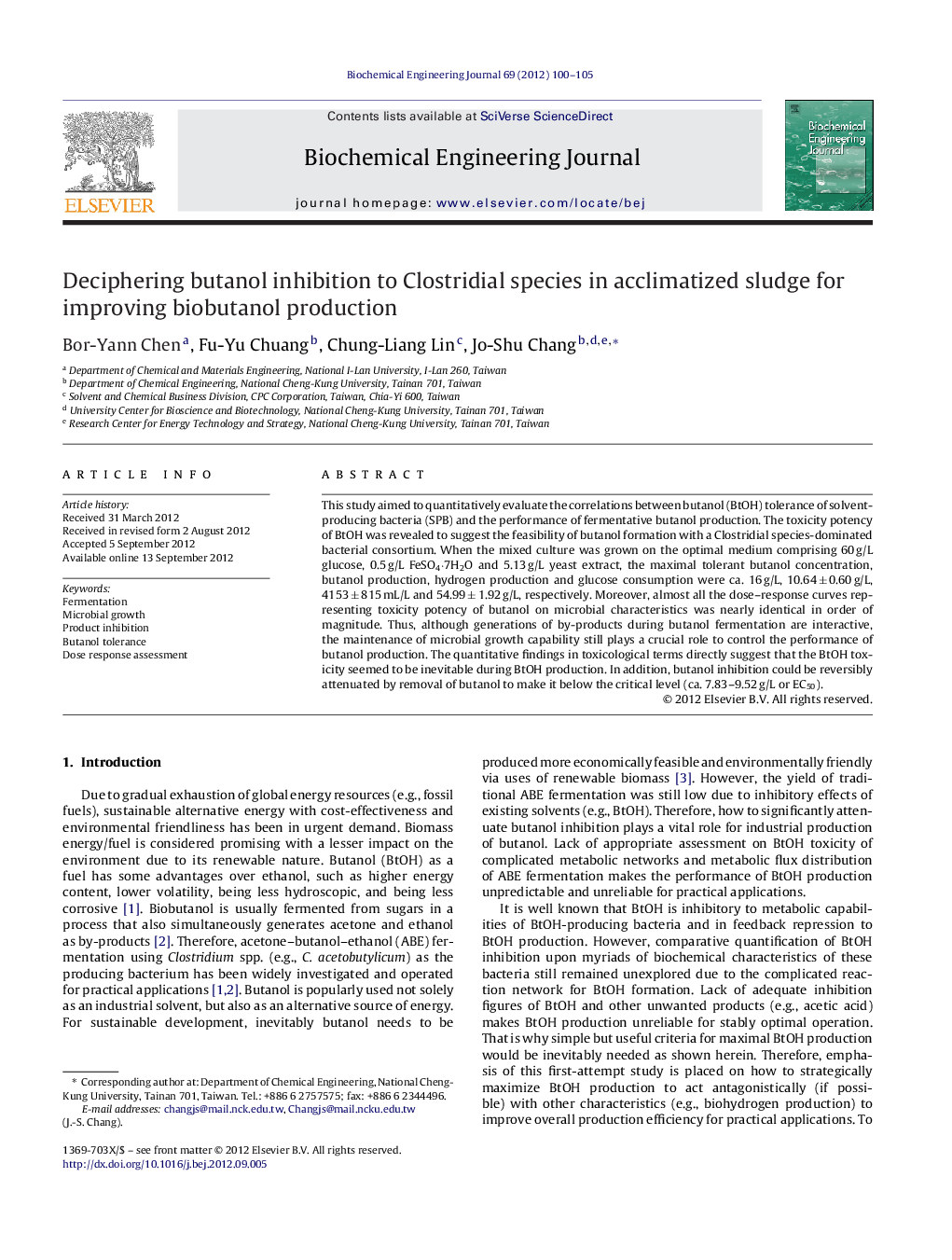| Article ID | Journal | Published Year | Pages | File Type |
|---|---|---|---|---|
| 3543 | Biochemical Engineering Journal | 2012 | 6 Pages |
This study aimed to quantitatively evaluate the correlations between butanol (BtOH) tolerance of solvent-producing bacteria (SPB) and the performance of fermentative butanol production. The toxicity potency of BtOH was revealed to suggest the feasibility of butanol formation with a Clostridial species-dominated bacterial consortium. When the mixed culture was grown on the optimal medium comprising 60 g/L glucose, 0.5 g/L FeSO4·7H2O and 5.13 g/L yeast extract, the maximal tolerant butanol concentration, butanol production, hydrogen production and glucose consumption were ca. 16 g/L, 10.64 ± 0.60 g/L, 4153 ± 815 mL/L and 54.99 ± 1.92 g/L, respectively. Moreover, almost all the dose–response curves representing toxicity potency of butanol on microbial characteristics was nearly identical in order of magnitude. Thus, although generations of by-products during butanol fermentation are interactive, the maintenance of microbial growth capability still plays a crucial role to control the performance of butanol production. The quantitative findings in toxicological terms directly suggest that the BtOH toxicity seemed to be inevitable during BtOH production. In addition, butanol inhibition could be reversibly attenuated by removal of butanol to make it below the critical level (ca. 7.83–9.52 g/L or EC50).
► Effect of butanol toxicity on butanol production by a mixed culture was studied quantitatively. ► Butanol inhibition to cell growth and butanol production was analyzed with dose–response curves. ► Feasibility of butanol formation by a bacterial consortium was evaluated in toxicological terms.
